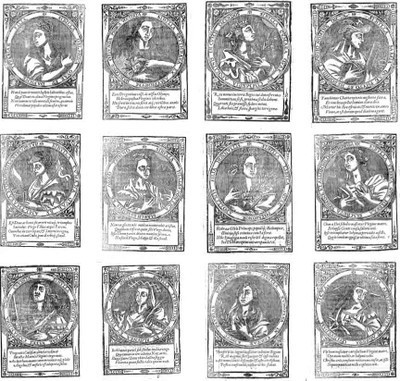| dc.description.abstract | Mexico City's elegant Palacio de Minería houses a remarkable series of portraits of the Twelve Sibyls of Antiquity. These portraits were painted by don Pedro Sandoval in the second half of the 18th century.
Prophets of pagan antiquity, the sibyls were appropriated by early Christianity, which claimed they were in fact prophesizing the mysteries of the Christian faith to the pagans. Consequently, they were the female counterparts to the Biblical prophets, who were charged with prophesizing to Jews rather than to Gentiles. As to the source of their prophetic gifts, Saint Jerome attributed it simply to the sibyls' virginity. To the ten sibyls known during the Middle Ages, two were added in the 15th century, thus arriving at the twelve that have been recognized ever since.
According to Sebastián (1982), the Sibyls of the Palacio de Minería derive from the woodcuts illustrating the Oraculos de las Doce Sibilas, Profetas de Christo N[uest]ro Señor entre los Gentiles, a book authored by Baltasar Porreño and published in Cuenca, Spain, by Domingo de la Iglesia in 1621 (see also Sebastián 1985, 411f; Sebastián 1992). The author of the woodcuts was probably one P. de Torres, who is mentioned in the cover of the book in connection with the woodblocks. Be that as it may, the woodcuts in Porreño's book are these.
Although Sebastián traces the Sibyls in the Palacio de Minería to these woodcuts, he also acknowledges that this hypothesis raises several problems. The first is that some of Sandoval's paintings are reversed mirror images of the woodcuts; the second is the woodcuts are notably coarser than the paintings they are supposed to inspire. To these two problems we must add a mystery: Sandoval signs only one of his twelve portraits—that of the Egyptian Sibyl. Why only this one?
But Porreño's is hardly the only series of engraved sibyls. In fact, there are quite a few such series. One of them is by Jacques Granthomme II (ca. 1560 - ca. 1613) and Jacob van der Heyden (1573-1645).
The series by Granthomme and van der Heyden was based on the celebrated series engraved by Crispyn de Passe I (c.1565-1637) in 1601, and was published in Paris around 1607, during their second stay in that city. Arguably, this is the true source of the series of Sibyls in the Palacio de Minería.
Take for instance the issue of the reversed images. None of the images in the Palacio de Minería is reversed relative to the Granthomme/van der Heyden series. They are reversed, however, relative to almost half of Porreño's images (those of the Delphic, Eritrean, Cumaean, Cumanan, and European sibyls). In addition, there are many small discrepancies between the two series of engravings. In all of them, the Sandoval paintings invariably agree with Granthomme and van der Heyden, not with Porreño (the texts that accompany the prints of Granthomme/van der Heyden and Porreño are identical).
The discrepancies are as follows: (a) the vertical bands in the frontis of the dress of the Eritrean, (b) the ornaments in the collar and (c) the confection of the shoulder pads in the Cumaean, (d) the left ring finger under the middle finger and (e) the ornament over the turban for the Samian, (f) the third braid of the Cumanan, (g) the separation of the pointing and the middle fingers in the left hand of the Lybian, (h) the cross borne by the Persian, (i) the unadorned lapel, (j) the elevated gaze, and (k) the attachment of the leaves to the branches with stems for the Frygian, (l) the direction of the Tiburtian's gaze, (m) the confection of the sleeve of the European and, possibly, (n) the Egyptian's gaze towards the viewer.
In addition, as a glance at the images above will reveal, the engravings by Granthomme and van der Heyden are much finer than those in Porreño's book. They would therefore make for a more fitting source for Sandoval's fine paintings.
Finally, deriving the paintings from Granthomme and Heyden rather than from Porreño solves the mystery of the Egyptian Sybil. For, this is the last of the Granthomme and van der Heyden series while only the ninth of Porreño's. Consequently, Sandoval signed only his portrait of the Egyptian Sibyl because it was the last one.
Following the navigation panel below will lead the visitor through the correspondences of this gallery. | en_US |



